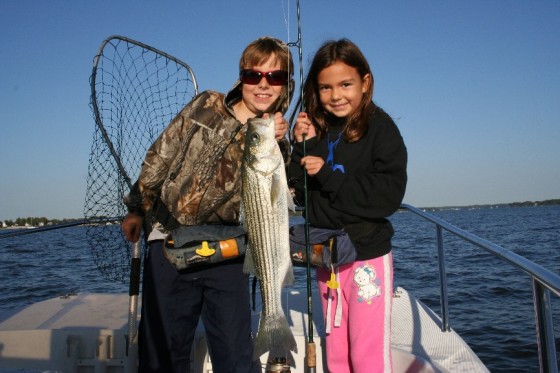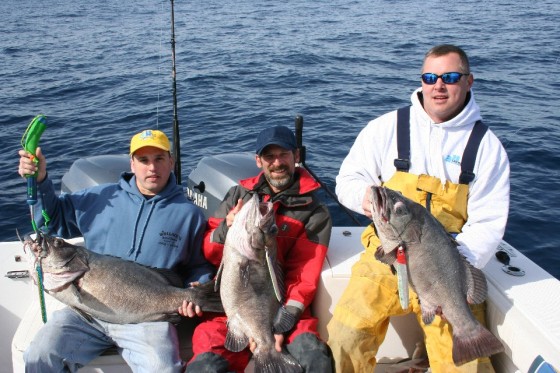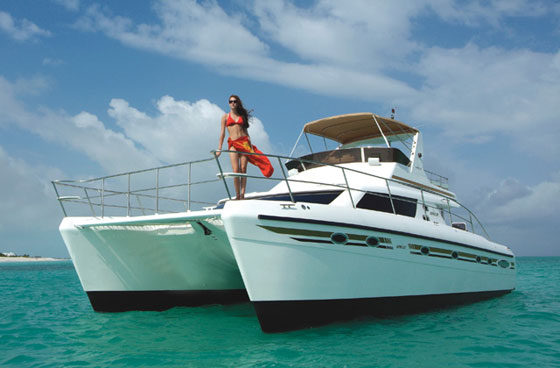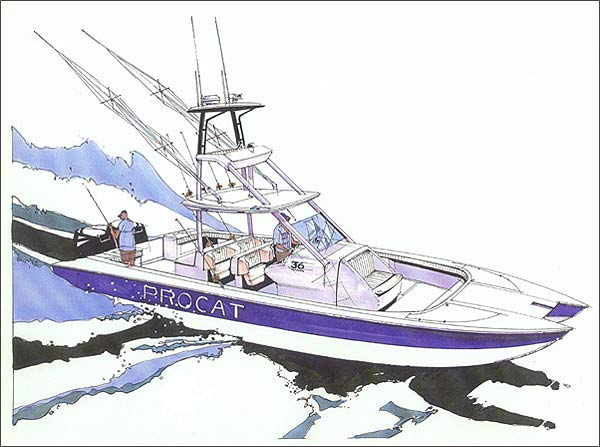Power Cat Versus Monohull: Which is the Better Fishing Boat?
The power cat versus monohull debate rages on, especially among diehard anglers looking for a new outboard-powered fishing boat in the 20-something range.
A serious angler in search of a serious center console or cuddy cabin fishing boat between 20 and 30 feet long is almost certain to run across both power cats and monohulls which strike his or her fancy. Which is going to be the best pick? That depends on how important each of these design traits is to you. Consider:

As this pair of 27 foot fishboats shows, power cats and monohulls can be quite different. Which one will you choose?
Power Cat Pro: When it comes to rough water abilities, most power cat fishboats will get the nod. Planing cats with “compression tunnels,” which get narrower as you move aft, create a cushion of compressed air between the hulls as they run. This softens the blows when hitting waves. Displacement power cats that don’t have compression tunnels usually have very fine bows (think of a pair of knives cutting through the water, as opposed to a single spoon) which also makes for a smoother, though often slower, ride. This isn’t just conjecture; it’s been proven in side-by-side cat/monohull tests performed with an accelerometer that twin hulls can reduce the severity of impacts by up to 50-percent.
Monohull Pro: Monohulls have a slow, predictable roll. Power cat boats, on the other hand, roll less but sometimes suffer from a “snap roll,” as a result of very fast righting moment. In a beam sea of significant size, this means the monohull will often be more comfortable.
Power Cat Con: Building two hulls takes more materials, and more manpower. As a result, when you match up a cat and a monohull of equal length and quality, the cat will almost always be more expensive.
Monohull Con: Monohulls require larger powerplants to move the same amount of mass, because their hulls usually aren’t as efficient. As a result, operating costs may go up.
Power Cat Pro: Powercats have more deck space per LOA. Since they carry their beam all the way forward, the foredeck on a cat may be twice the size of the one on a similarly-sized monohull, which loses beam as it comes to a point at the bow.

One of the big power cat advantages is a huge foredeck, which carries its beam all the way to the bow.
Monohull Pro: Monohulls generally have larger cabins. Especially when it comes to cuddy cabin boats, having the single wider hull at the bow makes for a lot more space down below. In a powercat, the forward sections of the hulls are often too narrow to effectively utilize for cabin space.
Power Cat Con: Some power catamarans “sneeze,” when compressed air in the hulls blows a mist back out of the tunnel. This can make for an overly-moist ride.
Monohull Con: Many monohulls take more spray over the bow. This depends quite a bit upon the conditions and direction of the wind and waves, but generally speaking, monohulls are going to be the wetter boats (unless you have a sneezing cat).
Power Cat Pro: Virtually all twin-engine powercats offer better close-quarters maneuvering than monohulls. This is because their powerplants are widely spaced, at either side of the transom. In a monohull, however, the engines are centered along the transom. As a result, the cat can spin and turn on a dime with little effort, while the monohull has much less leverage when the engines are opposed.
Monohull Pro: Monohulls are better weight-bearing platforms. Overload a powercat, and most of its advantages disappear as the twin hulls sink deeper into the water and the top of the tunnel begins slamming into waves. A monohull, on the other hand, can accept a much larger load before performance suffers as dramatically.

Monohulls are much better under a heavy load - pile on the anglers, pile on the fuel, pile on the gear, and most importantly, pile on the fish.
Power Cat Con: Many cats lean outward or remain flat in turns, instead of banking inward like a monohull. This takes some getting used to, and often surprises those who have little experience in a cat. As a result, you may need to warn your passengers to hold on before initiating a sharp turn.
Monohull Con: Monohulls often have a deeper draft. Especially in deep-V hull designs, this can be an important consideration if you enjoy both inshore and offshore angling.
Power Cat Pro: Many cats ride smoother as you go faster. It sounds crazy, but it’s true—especially for planing cats, because as more and more air gets packed between the hulls, the better a job it does of cushioning the blows. As a result, in choppy conditions that have many monohulls slowing down, the powercat will get to the hotspot first.
Monohull Pro: There are a lot more monohulls out there (accounting for over 90-percent of the market) which means it’s a lot easier to find the right boat for you. Reselling the boat is also likely to be easier. And finding a trailer for a cat can be challenging (you may need to have one custom built), while there’s a trailer out there for just about every size and shape monohull.
So, which design should you pick? First, recognize that all of the above pros and cons are generalizations—each and every boat is different, and may have characteristics that don’t fit the mold. Before you make your decision, take both types of boats for sea trials in varying conditions. Then make a list of your priorities, rank each type of boat accordingly, and sign on the dotted line.
For more information, read Offshore Fishing Hull Shapes. Some other article of interest might include Top 10 Fishing boats of 2012, Saltwater Fishing Boats: 10 Things to Look For, Aluminum Fishing Boats: Light, Economical, and Seaworthy, and Bay Boat Battles: What Makes One Better than Another.












